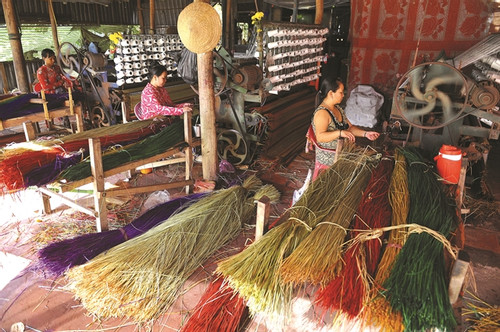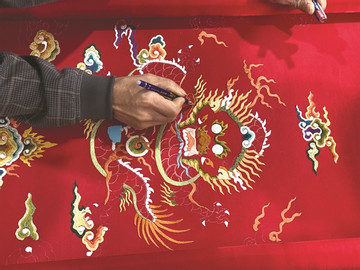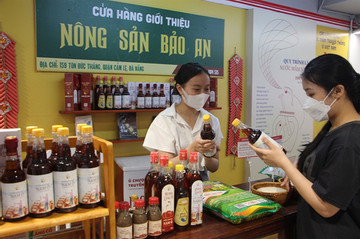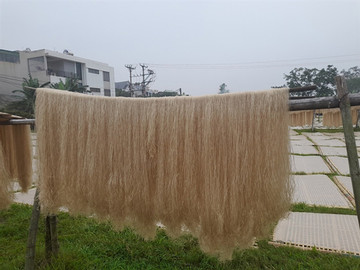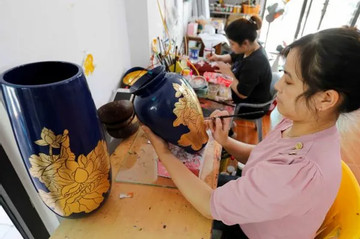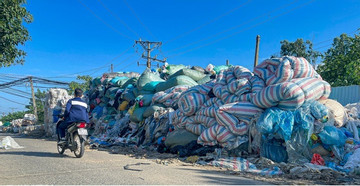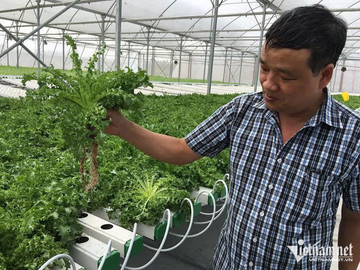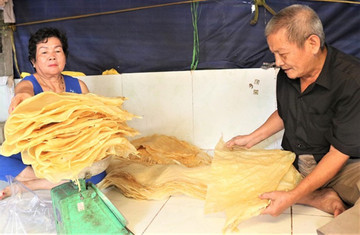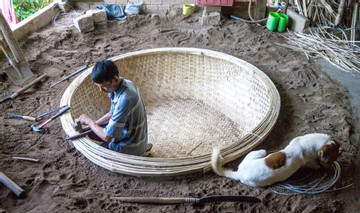- © Copyright of Vietnamnet Global.
- Tel: 024 3772 7988 Fax: (024) 37722734
- Email: [email protected]
craft villages
Update news craft villages
Reviving traditional craft villages in Dong Thap
The preservation of craft villages aims to maintain and promote local cultural values and traditional crafts, and boost tourism. Phương Mai reports.
Embroidering in a royal tradition
Dong Cuu Village lies on the bank of the Nhue Giang River in Hanoi's suburban Thuong Tin District, and has been long famed for its traditional embroidery.
Da Nang's famed fish sauce shows its strength
Born into a four-generation fishing family in Nam O Village in the central city of Da Nang, Bui Van Phong, now 70, began making fish sauce as a teenager and has kept developing the family brand for more than half a century.
Vietnam successfully connecting tangible with intangible heritage: UNESCO
Christian Manhart, UNESCO Representative to Vietnam, has hailed the nation’s success in connecting its tangible with intangible heritage and affirmed UNESCO’s further close collaboration serving Vietnam’s sustainable development.
The glass noodles village on the Nhue River
On the peaceful banks of the Nhue River lies the picturesque Cu Da ancient village, which is famous for brick houses with traditional architecture and for making glass noodles.
Son Dong craft village hectic as 'Tet' approaches
The village, which is located in the suburban district of Hoai Duc about 20km from the city centre, is famous for its meticulous products made of wood, mainly worshipping objects, including statues of Buddha and deities.
The craft village that earns living by hammering in the capital
Despite the rapid pace of urbanization, craftsmen in the outskirt district of Hanoi are still striving to preserve their hundred-year-old traditional trade.
100-year-old incense-making village busy ahead of Tet
Recent days has seen craftsmen in Le Minh Xuan incense-making village in Binh Chanh district of HCM City hard at work as they strive to meet orders for the coming Lunar New Year holiday, known locally as Tet.
Da Sy village forges ahead for Tet
The Lunar New Year is approaching, and the sounds of steel and iron from beating hammers resound throughout Da Sy. Coal furnaces here burn all day to serve people during Tet.
500 year-old traditional craft village in Hanoi
The wood carving village of Du Du is located at Thanh Thuy commune, Quoc Oai district, Hanoi. This is one of the few craft villages that preserve the quintessence of sculpture, especially wood sculpture.
Hanoi’s incense-making village becomes tourism magnet
Incense from Quang Phu Cau Village is available in Vietnam and abroad, including India, China, Malaysia, and other countries.
Lacquer village outlasts centuries-old craft
Alongside a wide range of products made from natural materials such as wood, bamboo and rattan, the village also has created new gold- and silver-inlaid products made from ceramic, pottery, and composite.
Mussel village comes out of its shell
In a village nestled on a section of the La River in Truong Son Commune, Duc Tho District, Ha Tinh Province, locals make a living by raking mussels at the bottom of the river and then cooking them to sell.
Village of scrap billionaires struggles with severe pollution
A village in the northern province of Hung Yen, a large scrap recycling hub, is struggling with severe pollution, posing health risks for local people.
The only glass-blowing village in Hanoi
To create glass products like medicine tubes, glass bulbs or other objects, many steps such as blowing, pulling, pressing, rolling are needed.
Vietnam vows to eliminate ‘black holes’ in agriculture
Digital transformation will solve the problems of Vietnam’s agriculture and farmers, and eliminate the sector’s ‘black holes’.
Developing My Hoa tofu skin craft village
My Hoa Village of Binh Minh Town in Vinh Long Province is always bustling, and the tofu skin here is golden, fragrant, crispy, and full of nutrients.
Tofu skin production ensures stable life for Vinh Long village
Tofu skin production has helped many people in a Vinh Long village earn a stable income.
Finding historical and cultural values of Vietnamese people in the Ceramics Museum
Bat Trang Ceramics Museum tells the story of 19 native families in the village who have developed their pottery imbued with the culture of each dynasty in the flow of time.
Basket boats and woven mats
Phu Yen is a coastal province in the central region of Vietnam famous for fishing, and the farmers here make basket boats, a.k.a. bamboo boats or coracles, for themselves to go offshore.
